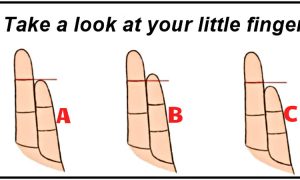Some facts of life are sad but true, and one of these facts is that climaxing for many women is anything but easy. In fact, the Cleveland Clinic reports that a mere 10% of women can easily achieve an orgasm. The other 90% have to deal with a lot of outside factors — everything from what position you’re in to what you do all day at work — that may be inhibiting your ability to get off.Orgasming for men is generally pretty straight forward, but for many of us women, it’s a whole different ball game. Every woman is built differently, and figuring out just what does and doesn’t work for you, or what factors from your daily life could be affecting you in the bedroom, can be a complicated business. But just because something’s difficult, doesn’t mean we should just give up hope. If you’re one of the many women who’s struggling to climax, we’ve rounded up 15 surprising reasons you might not be able to orgasm.
1. You have high anxiety.Anxiety can cause intrusive thoughts that may make it difficult to orgasm, says New York-City psychiatrist Grant Hilary Brenner, MD. In fact, a recent survey from Valparaiso University in Indiana showed that more than half of women who struggle to orgasm attribute the problem to anxiety. Plus, because of the complex nature of the condition, other hangups can be heightened during sex, causing a vicious cycle of worry and frustration. “Women with a negative body image tended to also report stress and anxiety,” Dr. Brenner writes in Psychology Today. If you feel that anxiety may be playing a role in your sex life, talk to a therapist.
2. You’re not tensing your muscles.Women who have trouble reaching orgasm are almost always told to “just relax.” But sex therapist Louanne Cole Weston, PhD, says that can be the wrong approach. “Muscle tension is often necessary for an orgasm,” Dr. Weston writes for WebMD. “In my experience, the majority of women learn to have their first orgasm by incorporating a fair amount of leg, abdominal, and buttock tension.” Weston also recommends contracting your lower pelvic muscles — the same ones you engage for kegle exercises.
3. You don’t have enough lubrication.The Valparaiso University survey also indicated that nearly a quarter of women who had difficulty reaching orgasm blamed insufficient lubrication. “Lubricant makes women’s (and men’s) genitals more erotically sensitive, so it helps women have orgasms,” writes Michael Castleman, author of Great Sex. Lubes are available drugstores and online. Consult this handy guide for expert tips on the best lube for every occasion.
4. There’s too much stimulation.”Pornography is how most of us learn about sex,” writes sexuality coach Blaire Lindsay. “It’s also hilariously ignorant of what actually feels good for women. The notion that harder and faster is equivalent to better is often the commonly held belief. But orgasms are directly linked to women’s nervous systems, and with each woman being wired differently, many require a softer approach.
5. You don’t tell your partner what you want.You’re not a mind reader, and neither is your partner. So staying silent about what really turns you on isn’t going to help you climax. Plus, every woman is shaped slightly different, so movements and angles that feel amazing for one person just don’t do it for another, Dr. Van Kirk says. The lesson here: speak up. “Sometimes a groan or a touch of the hand can make all of the difference,” she says. If they still don’t get it, tell them directly, or move their hand exactly where you want it. Most consider it a huge turn-on to see a woman so confident in bed.
6. You forgot to pee before sex.Everyone knows to pee right after sex to help prevent a urinary tract infection, but it’s smart to go beforehand too. “It can be incredibly hard to reach orgasm when your bladder is full,” Block says. The reason is simple: Instead of being in the moment, you’re constantly feeling the pressure to pee, and praying you don’t do it in bed. If there’s no way you’re going to make it to the end, Dr. Van Kirk suggests slipping out of bed to dim the lights, lighting a candle, and encouraging your partner to masturbate while you take a quick pee break.
7. Your medication is interfering.You know that little paper packet that lists the side effects of your medication? Actually read it, as drugs that cause a spike in prolactin levels — a protein that reduces libido — could be the culprit behind your inability to climax, Dr. Van Kirk says. Typically, blood pressure medications, birth control pills, and antidepressants are the main culprits,” she adds. Antihistamines may also work against you because they can reduce your ability to self-lubricate and make sex comfortable, Dr. Van Kirk says. If that’s the case, make sure you have plenty of lubricant and talk to your doctor about a possible medication switch if problems persist.
8. You spend most of the day sitting.Chaining yourself to that desk chair may make your boss happy, but it’s bad news for your pelvic muscles. Sitting all day shortens them, and that can lead to pelvic pain that makes it more difficult to orgasm, says Dr. Van Kirk. To prevent problems, she suggests setting an alarm as a reminder to move every half-hour to hour during the work day. (Some activity trackers and smart watches, like the Fitbit Versa, will buzz your wrist to encourage 250 steps every hour.) Able to slip into a private office or conference room? Stretch your hip flexors with back bends, squats, and butterfly stretches.
9. You’re afraid to lose control.When you’re taught to be in control of every aspect of your life, it can be tough to do the exact opposite in bed. But refusing to let go could be the reason you’re unable to orgasm because, well, orgasms tend to take over as they move throughout your body. But if just the thought of that gives you heart palpitations, don’t freak out — you don’t lose complete control over your body. At most, your body may shake and your vaginal wall muscles contract, Block says. Remind yourself of that when you’re in the moment, and as sensations start to build, keep breathing and try to let your body go with it. If you feel like you still need help letting go, talking with a sex therapist may help.
10. You don’t make noise.Being vocal during sex has been proven to work wonders for women, as it can allow you to orgasm longer, harder, and more often, says Laurel House, relationship expert and author of Screwing the Rules. So when something really turns you on, say it — whether it’s through a moan, quietly saying “right there,” or screaming “yes!” If that feels uncomfortable after a few tries, House suggests heightening your sensory experience. “Take in the feeling of skin-to-skin contact; enjoy the pressure of your partner’s body pressing down on yours,”she says. Embracing these sensations will help you tune out the world and focus on maximizing your experience.






















